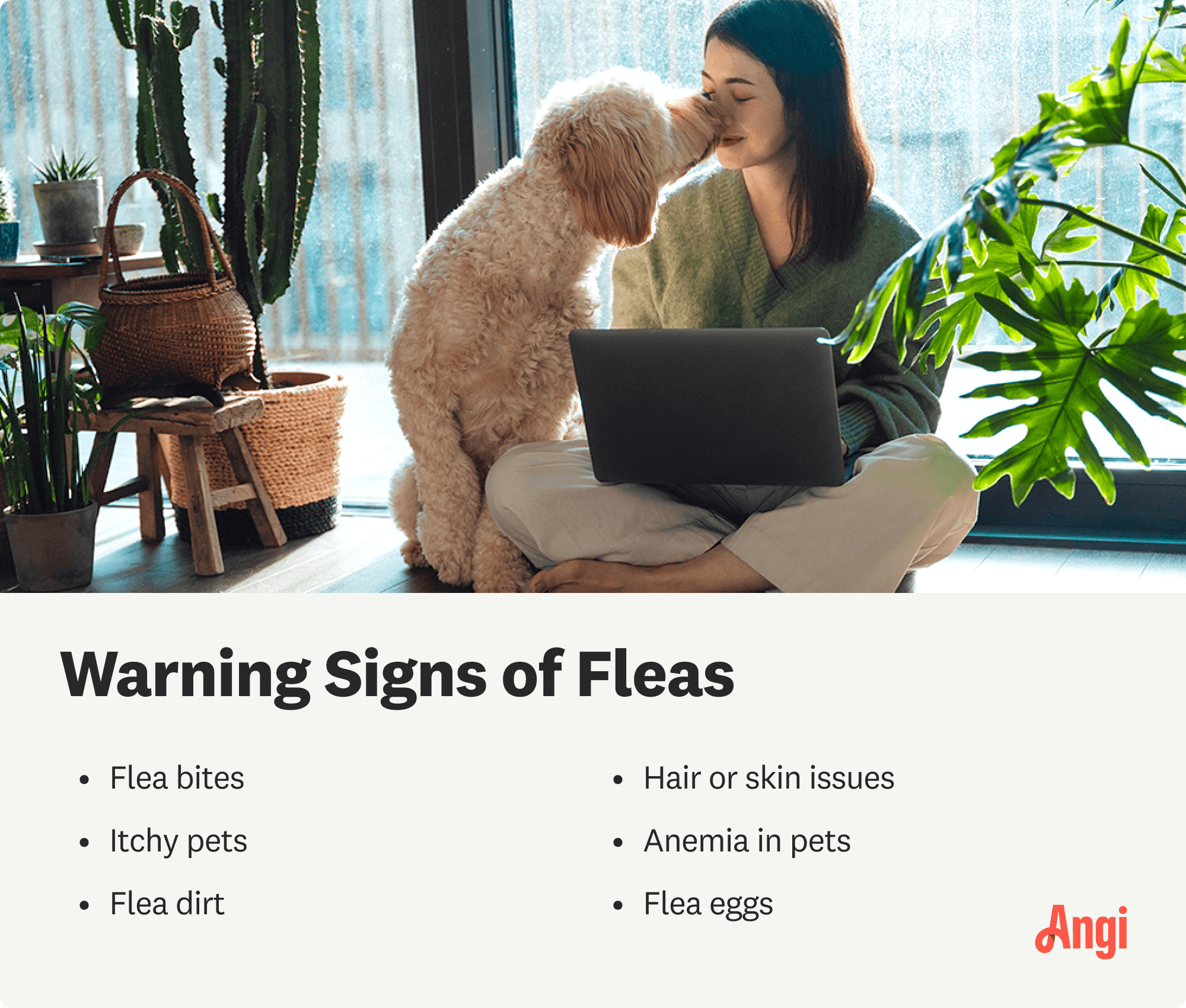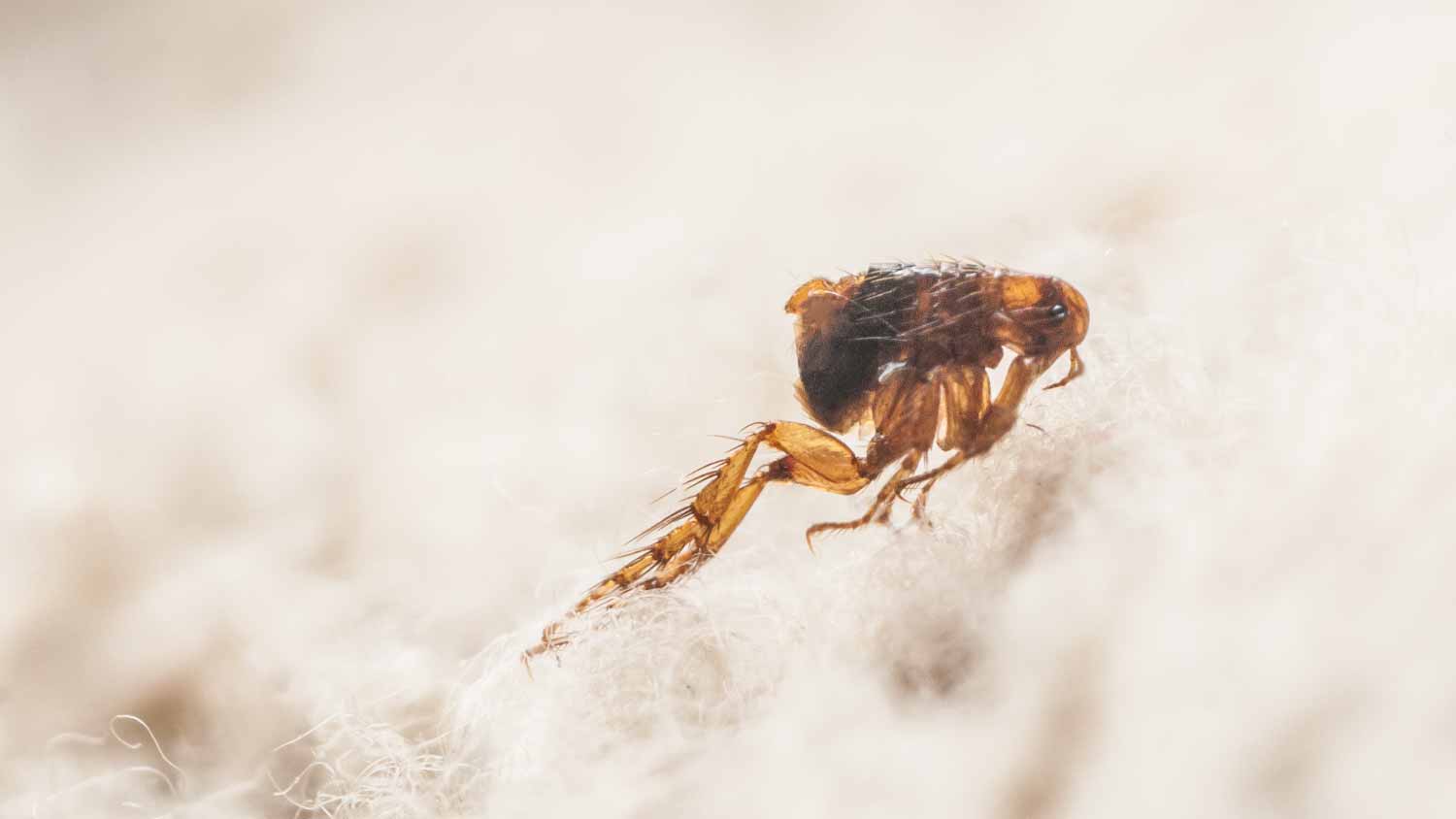
If you have a serious rodent problem, you may need to know the cost of hiring a rat exterminator. We can help you estimate costs in Chicago, IL.
An exterminator’s expertise is priceless, so don’t hesitate to hire


Fleas are tiny insects that reproduce rapidly and can carry disease.
Calling a professional exterminator at the first sign of fleas is the best-case scenario.
DIY flea removal methods can help, but they aren’t as effective or as fast-acting as professional treatment methods.
The cost to hire a flea exterminator ranges from $75 to $400.
Wondering when to call an exterminator for fleas in your home? These tiny, disease-carrying pests feed off of human and animal blood, and they can lay thousands of eggs within a short life span, resulting in a full-blown infestation that’s hard to eradicate. While DIY extermination can be somewhat effective, calling a professional exterminator is often the safest and most effective option. Learn when to call an exterminator for fleas for your peace of mind.
If your flea problem doesn't resolve itself after implementing DIY removal methods, it's time to call in a professional exterminator. Don't hesitate to take pest control action to prevent the infestation from growing.

When it comes to fleas in your home, you can never go wrong calling an exterminator to look into the issue. If you’ve tried a few flea DIY treatments, like vacuuming and steaming all soft goods and treating your pets, and there are still signs of these pests, call a professional exterminator immediately. That indicates that it’s a more serious infestation that will require professional tools and treatments to eradicate.
You should immediately hire a professional flea exterminator if you notice the flea problem is present in multiple rooms or areas of your house. That’s a clear sign that these itch-inducing pests are spreading, and you’ll need professional intervention right away.
In some cases, it’s possible to eradicate a minor flea infestation on your own. Before hiring a flea removal pro, you can attempt these methods for getting rid of fleas:
Apply flea treatment to pets
Clean all linens
Vacuum and steam soft surfaces
Apply diatomaceous earth
Apply yard treatments

As a general rule, calling an exterminator to remove fleas can never hurt. Even if your local flea control pro only finds a few fleas in your home, you can have peace of mind knowing they’ve taken care of the problem.
Consider the following two factors when deciding whether or not to call an exterminator.
It’s usually best to call an exterminator as soon as you suspect a flea infestation—no matter how small it may seem. Fleas multiply quickly and can hide extremely well. The untrained eye cannot locate or eliminate a colony of fleas like a professional can.
When caught in its beginning stages, DIY extermination may be useful. However, hiring a local flea exterminator is highly recommended for severe infestations. With several visits and a strategic approach, a professional exterminator can completely eradicate fleas and any unhatched eggs from your home.
Did you know that there are more than 2,500 species of fleas worldwide? Certain species reproduce more aggressively than others and can be even harder to remove. If you’re dealing with an especially pesky kind of flea, you should call an exterminator. A professional flea control exterminator will determine the type of flea in your home and implement a plan to permanently remove them.
If you have a severe flea infestation in your home, your exterminator may recommend multiple treatments to fully eradicate the issue. Some pros may return a few weeks after the initial service to apply a second treatment to any eggs that hatched in the interim. If that’s the case, talk with your flea exterminator about pricing, as some companies charge up to $200 per follow-up.
When hiring an exterminator, 64.4% of homeowners request a visit within the first week of noticing an infestation. This urgent approach is important when dealing with fleas because they reproduce rapidly. A small number can become a huge problem in a matter of days, so get a pro in ASAP.
The cost to hire a flea exterminator ranges from $75 to $400, with the average cost being $270. Flea removal costs will vary based on several factors, including the severity of the infestation, type of flea, property size, and extermination method. Be sure to get quotes from multiple exterminators to find the best fit for you.
Keep in mind that the severity of the infestation will determine the cost of the removal service.
| Infestation Level | Average Cost |
|---|---|
| Small | $100–$175 |
| Medium | $175–$300 |
| Large | $325–$550 |
Compared to the cost of hiring a professional exterminator, the cost of DIY flea removal is significantly less. Over-the-counter pesticides typically cost anywhere from $5 to $30 per bottle or package. However, DIY methods can be unsafe for humans and animals, and usually aren’t as effective as professional treatments.
While hiring a professional flea exterminator may cost more, it’s often a worthwhile investment to guarantee a higher success rate. Professional exterminators have the expertise and high-quality materials needed to get rid of fleas in your yard and home for good. Plus, they’ll help you implement ways to prevent a similar problem from happening again. Not to mention, you’ll save yourself a lot of time and stress; your peace of mind is priceless.
From average costs to expert advice, get all the answers you need to get your job done.

If you have a serious rodent problem, you may need to know the cost of hiring a rat exterminator. We can help you estimate costs in Chicago, IL.

Whether you have bugs, bats, or rodents invading your home, you’ll want to contact an exterminator quickly. Find out how much pest control costs in Chicago, IL.

Discover the average ant exterminator cost, factors impacting pricing, and how to save. Get expert tips to budget for ant removal and protect your home.

Worried you might have bats in your attic? Learn five tell-tale signs that bats have taken up residence in your home (that you shouldn’t ignore), and what to do about it.

Pest inspection costs depend on the type of inspection, location, and other factors. Learn more about how much pest inspections cost with this guide.

Wondering how to kill stink bugs—and keep them away, for good? Read on for a DIY guide on how to get rid of stink bugs.